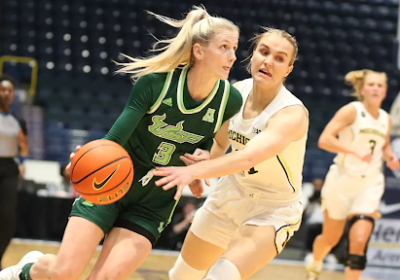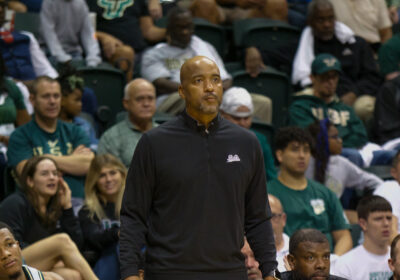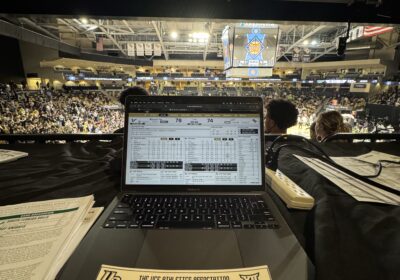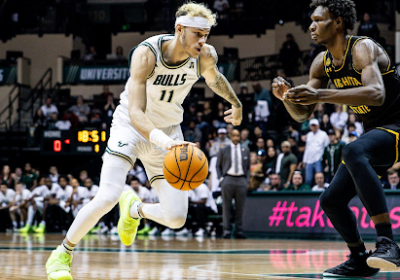Fixing the men’s basketball offense starts with Murphy
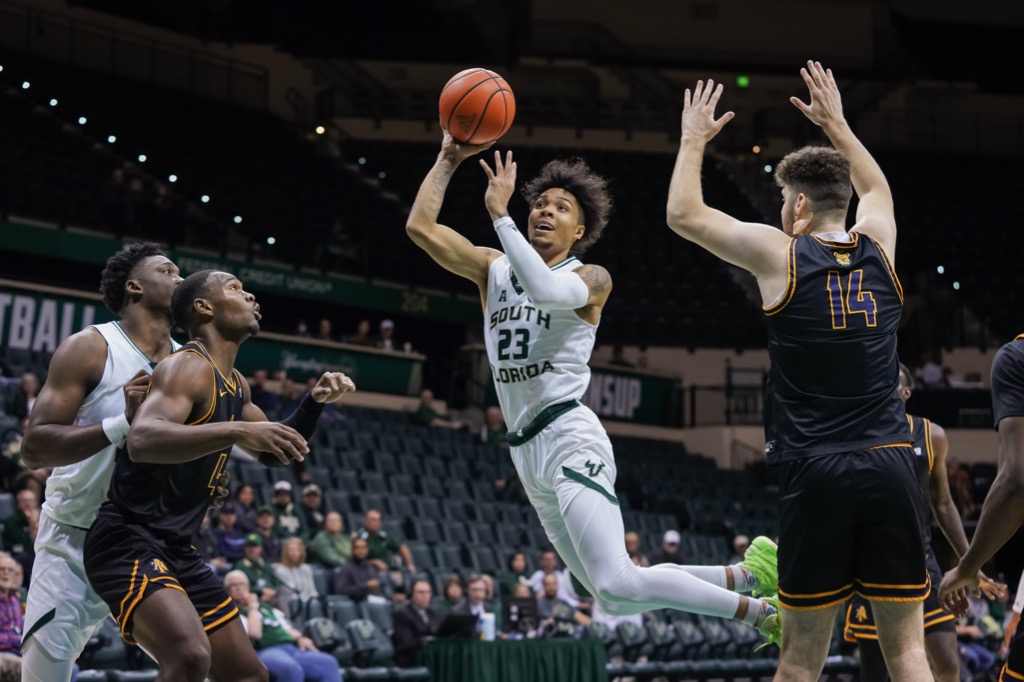
When a team ranks as low in offensive statistics as USF men’s basketball does, improving it is an issue too large to solve all at once. However, a good place to start is with the player who leads, freshman guard Caleb Murphy.
Murphy arrived at USF in 2020 as the program’s highest-rated recruit of all time, a title that naturally comes with higher expectations than anyone before him.
Although he’s listed as a freshman due to the NCAA’s COVID-19 eligibility rules, Murphy is finishing his second season in Tampa and one glaring weakness in his game remains, his three-point shooting.
As the Bulls’ (7-19, 2-12 AAC) leading scorer this season at 11.5 points per game, the team relies on his ability to score consistently. Murphy’s best attribute is his ability to drive to the rim, getting shots around the basket and in the mid-range, but his offense becomes less effective further from the hoop.
Murphy is not treated as a threat from deep by opposing defenses and with good reason. He doesn’t seek out opportunities to shoot from three-point range. Forty-seven games into his USF career, he has attempted only 50 three-pointers and converted just eight, shooting just 16% from beyond the arc.
As a result, when Murphy is initiating the offense and running plays from the backcourt, opposing defenses have one less option to worry about. This dynamic affects the way Murphy is guarded, as defenders expect him to either pass the ball or make a move off the dribble, allowing them to sag off Murphy, daring him to shoot.
The Bulls are far from a well-oiled machine on offense. In fact, it wouldn’t be a stretch to call this offense the poorest in the country.
The team is third from bottom in terms of scoring average at just 57.5 points per game. When it comes to shooting, USF’s three-point percentage (25.3%) and field goal percentage (37.5) are the worst in all of Division I.
Coach Brian Gregory has lamented the team’s inability to shoot at even an average clip in postgame press conferences several times this season. The average team field goal percentage in Division I in 2021 is about 44%, a benchmark USF has achieved just twice all season.
Playing with a primary ball-handler who cannot be relied upon from three-point range like Murphy hinders the team’s spacing on the floor, especially when playing against a zone defense.
The 2021-22 campaign has not been successful for the Bulls, who sit at the bottom of the AAC standings with just four games remaining in the regular season, and there is no reason to believe the team can make a run in the conference tournament.
If Murphy stays at USF beyond this season, improving his shooting range should be top of his list this offseason.

